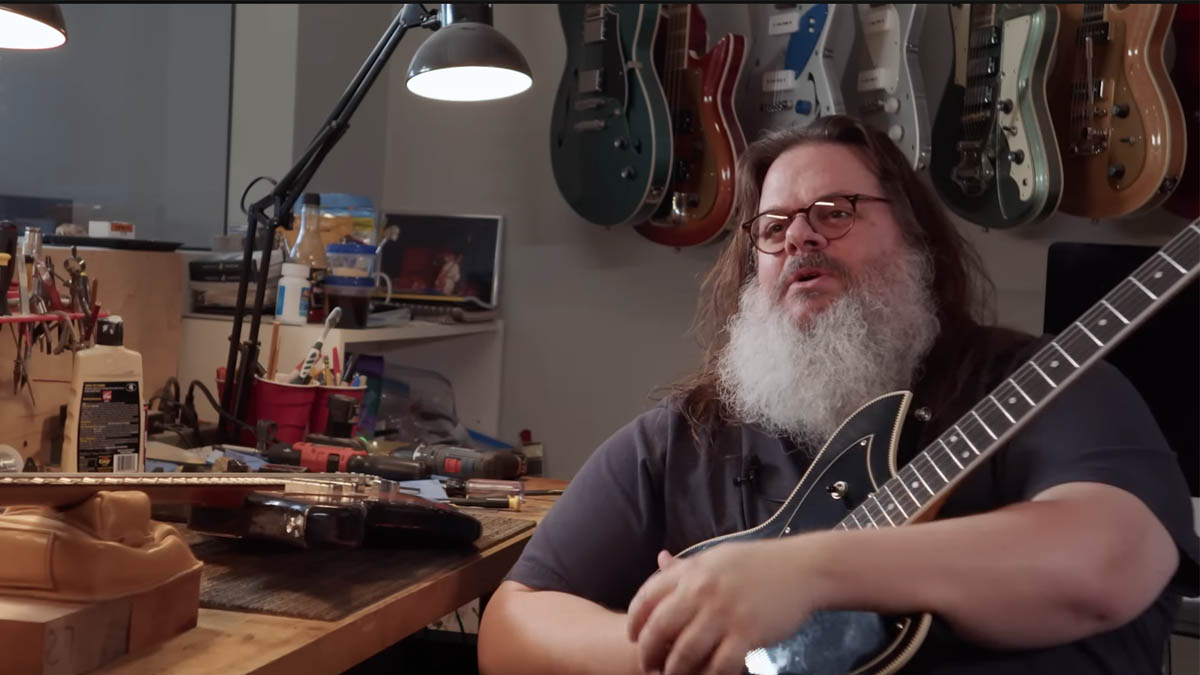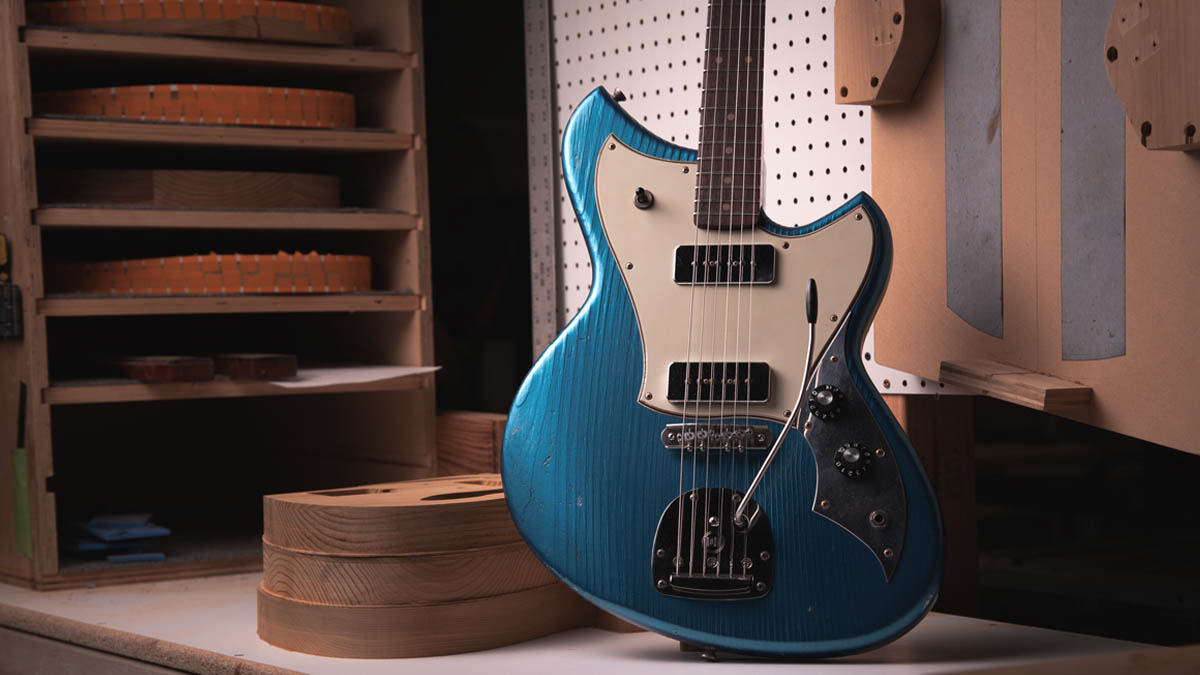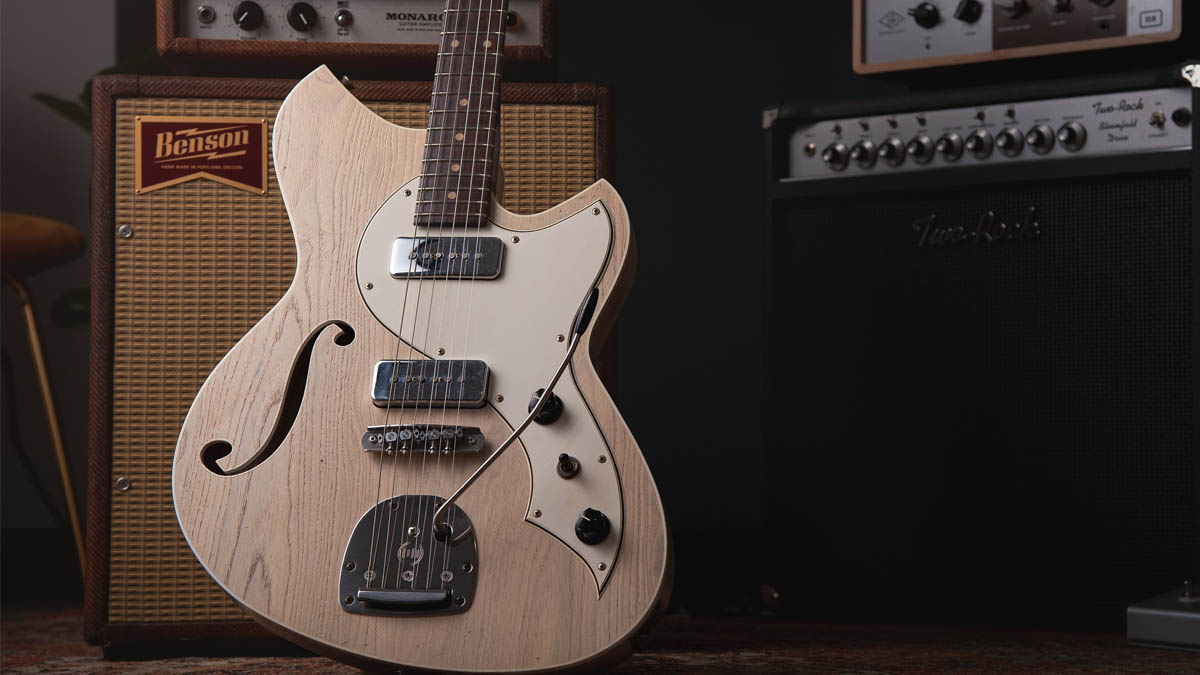“I got a Warmoth 8-string neck, bolted it onto that thing“: Novo Guitars’ Dennis Fano explains how radical mods on a ‘66 Jazz Bass launched his career as a luthier
Speaking upon the launch of Novo Guitars official Reverb store, Fano shared the story behind one of the hottest brands in guitar, and how it all started with a gnarly bass modding project

Dennis Fano, the mastermind behind Nashville-based boutique brand Novo Guitars, is considered by many players to be a bona fide superhero of electric guitar building, and if that’s the case then his origin story has got to be interesting, maybe a little unconventional – as it turns out, it is. It all started with a bass guitar.
With Novo Guitars just opening its official Reverb store, launching it with 15 unique one-off electric guitars, Fano sat down for an in-depth interview for the online gear retail giant’s YouTube channel and explained how a bass player, who doesn’t even consider himself as a serious player, became the designer behind one of the hottest brands in high-end electric guitar.
“When I got my first real bass, a ’66 Jazz Bass… the thing was already stripped down, but it didn’t take long for me to start pulling that thing apart and seeing what else I could do with it,” he says. “Now, I had zero prior knowledge or experience with guitars, or basses, and didn’t know what I was doing. At one point I got a Warmoth eight-string neck, bolted it onto that thing, got an eight-string bridge, carved out – very crudely – a third Jazz Bass pickup by the neck.”
To me, pine sounds like what alder wants to be,” says Fano. “It has a great, strong midrange
He didn’t stop there. He augmented the control plate, too, adding a second one and integrating it with the factory piece. By his own admission, it was not pretty. The vintage gear enthusiast might be nodding in agreement at that, though we have to bear in mind this bass had already been stripped. It was ripe for experimenting on, and that led Fano to a career change.
“The thing was gnarly,” he says. “Doing that was the most fortuitous thing I could have done because the one thing I couldn’t do in turning this four-string bass into an eight-string – I didn’t know how to make a nut.”

The guitar player in his band recommended a luthier. The luthier was Darrell Gilbert, who just happened to work for Gibson. He made Fano a brass eight-string nut, and when Fano picked it up and asked Gilbert for his advice on getting into guitar-making, Gilbert suggested an apprenticeship, and invited Fano to join him. Fano was off to the races.
The interview has plenty of insight into how Fano has built the Novo brand. He talks about his evolution as a designer, from relying on pencil and paper sketches to moving over to Illustrator, and how these designs then inform the CNC machine for precise cutting.
Get the MusicRadar Newsletter
Want all the hottest music and gear news, reviews, deals, features and more, direct to your inbox? Sign up here.
Fano is an open book here, explaining how necks are cut out and left to sit for a month before revisiting them to fret and finish them. “We’ll let any internal stresses work their way out of that material so that when we go to clean up our playing surface and get frets into it we’ve got as stable a platform to work with,” he says.
Novo Guitars designs are kind of radical in many ways. Fashionably offset but no Jag/Jazz clone, they eschew traditional tone woods such as alder or ash in favour of tempered pine.
“To me, pine sounds like what alder wants to be,” says Fano. “It has a great, strong midrange. It’s actually pretty well balanced but it’s got this forward midrange to it. The reason for the pine is really just because it sounds incredible, and it’s unique – and it’s a sustainable materially, too. That is important to me.”
The finishes and hardware are aged and Fano makes no apologies for that. Hitherto, he would make custom instruments for players and they would tell him they wouldn’t want to take it out of the case for fear of damaging the finish. Offering them all with some degree of ageing takes away that caution, says Fano, and liberates players to play the instrument.

There are some secrets he isn’t quite ready to share, like how he adds textures to the body finishes is one, a signature process that he arrived at by accident.
“That was something I kind of stumbled across early on with the pine,” he says. “I had one particular body that had a really cool, gnarly ripple in it where the belly cut was carved into it, and I decided to leave it alone instead of trying to level it out and flatten it out. I thought, ‘Well, let’s make this one unique.’ I don’t know if I referred to it as texture, or ripple, or whatever it was at the time, but it was a really cool touch, and I found through experimentation ways where I could kinda coax that texture out of every pine body.”
And those pine bodies? He sticks them in the freezer to start the checking process. Crazy. But it works, and besides, if you started out turning a vintage four-string Jazz Bass into an eight-string, all bets are off.
You can check out the interview above, and view the current Novo Guitars collection at Reverb.
Jonathan Horsley has been writing about guitars and guitar culture since 2005, playing them since 1990, and regularly contributes to MusicRadar, Total Guitar and Guitar World. He uses Jazz III nylon picks, 10s during the week, 9s at the weekend, and shamefully still struggles with rhythm figure one of Van Halen’s Panama.
“We are so unencumbered and unbothered by these externally imposed rules or other people’s ideas for what music should be”: Blood Incantation on the making of Absolute Elsewhere and how “Data from Star Trek” saved the album – and the studio
“I feel like that song had everything we needed to come back with”: Bring Me The Horizon’s Lee Malia on Shadow Moses, its riff and the secrets behind its tone, and why it was the right anthem at the right time










